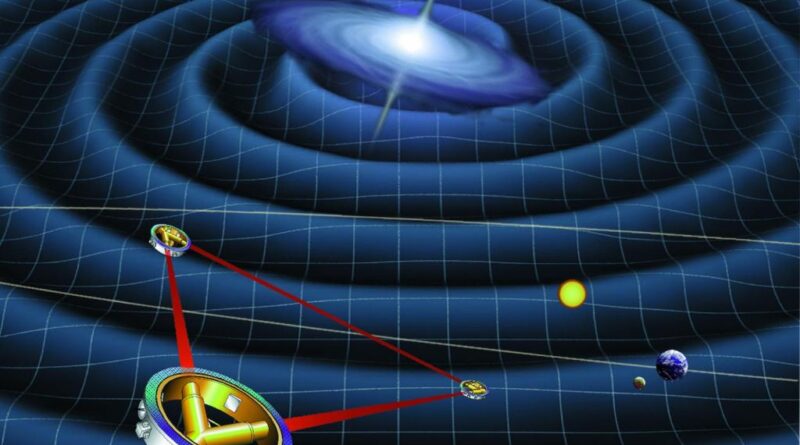Scientists Develop Novel Method to Detect Supermassive Black Holes: Use Mini Black Holes!
In 1974, astronomers Bruce Balick and Robert L. Brown discovered a strong radio source at the center of the Milky Way galaxy. The source, Sagittarius A*, was later revealed to be a supermassive black hole (SMBH) with a mass greater than 4 million times that of the Sun. Since then, astronomers have determined that SMBHs reside at the center of all galaxies are highly active central regions known as active galactic nuclei (AGNs) or “quasars.” Despite everything we’ve learned, the origin of these supermassive holes remains one of the greatest mysteries in astronomy.
The most popular theories are that they may have formed when the Universe was very young or they have grown over time by eating matter around them (accretion) and by merging with holes who are black? In recent years, research has shown that when collisions between such large objects occur, Energy Waves (GWs) are released. In a recent study, an international team of astronomers proposed a new method for detecting pairs of SMBHs: analyzing the gravitational waves produced by binaries of small holes in nearby stars.
The study was led by Jakob Stegmann, Research Scientist at the Max Planck Institute for Astrophysics (MPA) and the Gravity Exploration Institute at Cardiff University. He was joined by researchers from the Niels Bohr Institute, the Center for Theoretical Astrophysics and Cosmology at the University of Zurich (CTAC-UTZ), and the California Institute of Technology (Caltech). A study detailing the team’s findings, “Explanations of massive black binaries in nearby decihertz gravitational-wave sources,” was recently published. The Nature of Astronomy.
First detected in 2015 by scientists at the Laser Interferometer Gravitational-Wave Observatory (LIGO), Gravitational Waves (GWs) are waves in spacetime caused by the collision of massive objects such as white stars. white and black holes. Although many signals associated with binary pairs of merging black holes have been detected, no GW events associated with SMBHs have been detected because current Earth-based instruments do not care about these events how often do they come out. Just like the issues facing ground-based observatories, scientists hope to remedy the situation by developing space-based instruments.
This includes the Laser Interferometer Space Antenna (LISA), a mission led by ESA that is expected to launch sometime in 2035. Unfortunately, detecting a merger between the largest holes in the Universe is still not possible. it is not possible. However, Stegmann and his colleagues suggest that binary SMBHs can be detected by analyzing the gravitational waves produced by small black binaries. Their proposed method magnifies the subtle changes that SMBHs cause in the GWs produced by the smaller nearby black holes.
In this case, the small black binaries act as a beacon, revealing the presence of larger pairs of merging black holes. As Stegmann explained in a recent UHZ announcement:
“Our idea works like listening to a radio station. We propose to use a signal from pairs of black holes similar to the radio waves that carry sound. Big black holes are embedded in the frequency modulation (FM) of the detected signal low frequencies that we don’t understand.”

However, the evidence that this proposed method provides would be indirect, coming from the background noise produced by many distant binaries. Additionally, it will require a deci-Hz gravitational-wave detector, which is more sensitive than current equipment. In comparison, the LIGO instrument measures GWs from 7.0 kHz to 30 Hz, while the Virgo Observatory can detect ocean currents. 10 Hz to 10000Hz range. By observing small changes in the signal from small black binaries, scientists can identify SMBHs from 10 to 100 million times the mass of the Solar, and in regions which are far away.
As Lucio Mayer, a black hole theorist at the University of Zurich and co-author of the study, added:
“With the path of the Laser Interferometer Space Antenna (LISA) now set, after it was approved by ESA last January, the public needs to evaluate the best strategy for the next generation of microwave detectors gravity, and especially what kind of frequencies they should target – studies like this bring a strong incentive to prioritize deci-Hz detector design.”
Further Reading: UZH, The Nature of Astronomy
#Scientists #Develop #Method #Detect #Supermassive #Black #Holes #Mini #Black #Holes
